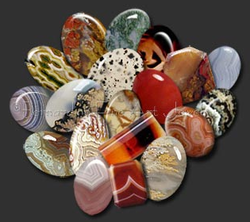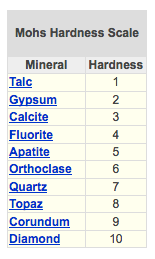Tuesday, August 13 2019
The type of stones you use for rock tumbling is largely personal preference. But whether you collect Any rock with a hardness of 5-7 on the Mohs hardness scale will generally take a nice polish in a rock tumbler. Agates have a hardness of 7. Harder rocks usually result in a high-gloss finish. Softer rocks will get smooth and rounded, but they won't take a polish. If the rock looks earthy, it will generally still look earthy when you take it out of the tumbler. Mohs Hardness Scale is named after its inventor, Friedrich Mohs, a German mineralogist. The scale was developed in 1812. He selected 10 mineral To start, fill the rock tumbler barrel between 2/3 and 3/4 full. Choose rocks of varying sizes, as this will promote thorough tumbling action. A batch of rocks that are all about the same size will often not tumble properly or grind very slowly. For a 3 pound barrel, a good range of sizes is from .25 inch to 1.5 inches. Lortone Rock Tumblers found here. If you don't happen to live where agates can be found in stream beds or where quartz pebbles can be found along beaches, that's OK. You can still enjoy tumbling rocks by purchasing the rough materials online. Although it's fun to collect your own rocks, it is often much more economical to purchase them. And remember that collecting on private property without permission is unlawful and that removing rocks from parks and most other types of public land is also illegal. Rocks NOT to Tumble It's just as important to know what type of rocks you should NOT tumble, as it is to know which ones with produce nice round and shiny gemstones. Sedimentary rocks such as sandstone, coal, limestone and shale are too soft or poorly cemented to polish into shiny gems. Metamorphic rocks that contain micas or have a "grainy" texture are also unsuitable - they will break up instead of becoming smooth. And, most igneous rocks do not tumble well because they contain several different minerals that wear down at very different rates. Nugget of News Blog |
|
Nugget of News Blog |






 them on your own or buy rough stones, for best results stick to stones of similar hardness but of various sizes when tumbling together. This will ensure they all take approximately the same amount of time to reach the proper smoothness, and that harder stones don't damage softer stones during the tumbling process.
them on your own or buy rough stones, for best results stick to stones of similar hardness but of various sizes when tumbling together. This will ensure they all take approximately the same amount of time to reach the proper smoothness, and that harder stones don't damage softer stones during the tumbling process.  s of distinctly different hardness (hardness is the resistance of a material to being scratched) that ranged from a very soft mineral (talc) to a very hard mineral (diamond). Since you always want to tumble together stones of similar hardness for best results, it's important to understand this principle.
s of distinctly different hardness (hardness is the resistance of a material to being scratched) that ranged from a very soft mineral (talc) to a very hard mineral (diamond). Since you always want to tumble together stones of similar hardness for best results, it's important to understand this principle.